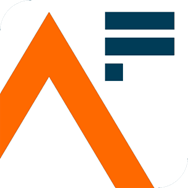Developing an interactive dashboard for the Outcome Indicator Framework

At the end of 2019, team leader Christine Holleran visited the Office for National Statistics in Newport to learn about their OpenSDG platform. She immediately saw the potential for reusing the platform to present the Department for Environment, Food and Rural Affairs (Defra) Outcome Indicator Framework indicators which have been developed to measure the governments progress towards the goals set out in the 25 Year Environment Plan. In a little under 2 years, Christine’s vision has become a reality and the Outcome Indicator Framework dashboard is up and running.
Our senior leadership team decided that it would be best to build a dashboard for the Outcome Indicator Framework in house, rather than contracting out the work to a team of consultants. This approach has many advantages and from our point of view, it allowed us the opportunity to learn new skills and to try out working in an entirely different way!
We are both experienced Civil Service statisticians, and whilst Clare had previous exposure to coding in R and had dabbled in some data science, Simon was totally new to the world of reproducible analytical pipelines and interactive dashboards.
In September 2020, a data engineer, Ed Fawcett-Taylor, was brought in to lead the Outcome Indicator Framework dashboard project, initially through a proof of concept stage which demonstrated the feasibility and advantages of pipelining and dashboards for this work area. This initial phase ended successfully in February 2021 and we decided to roll the proof of concept out to the whole suite of 66 indicators in time for the latest 25 Year Environment Plan Progress Report published on 22 October 2021. We drafted in help from the statistics and science teams, together with additional ad-hoc support from other data scientists and we began our data science journey.
The project was run within an Agile framework, we worked to 2-week sprints with a sprint planning session at the start of every fortnight, daily morning stand up meetings and a sprint review and show and tell session for our colleagues and stakeholders at the end of each 2-week sprint. This was quite a different way of working for us both and although we were initially hesitant to accept so many additional meeting invites, we soon found it to be a very productive, collaborative and enjoyable way of working. It was especially nice, given that we are all currently home based, to have a daily short chat with our colleagues each morning (with cameras on to check nobody was still in their PJ’s).
We worked a great deal in GitHub, and used their project board to plan and progress work. A project board it is a great tool for recording and prioritising actions, allocating work amongst a dispersed team and keeping up to date with progress. Having spent the majority of our careers in Defra preparing statistics releases using Excel spreadsheets and Word documents, it was like a breath of fresh air to discover how to create webpages using HTML, markdown and SASS. It was also a real eyeopener to realise that you don’t need to be a fully-fledged data scientist either – you just need some enthusiasm, willingness to learn and some courage to adapt existing code!
The dashboard has been received very positively, and Christine is delighted by how her vision has become a reality far beyond her original expectations. The dashboard has been presented to Defra’s Non-Executive Directors, the Environment Committee and the cross-Government 25 Year Environment Plan Board, who were all very impressed. Our Permanent Secretary Tamara Finkelstein was particularly impressed that such a professional and well-developed product was produced in house. We are now busy planning our next steps, and how to make it better yet!
